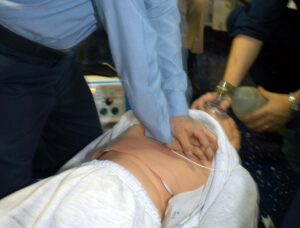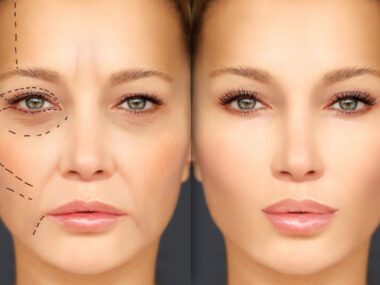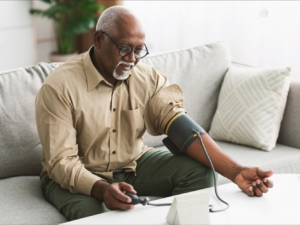Cardiac arrest is a medical emergency that occurs when the heart suddenly stops beating, or it beats irregularly and ineffectively. It is a life-threatening condition that requires immediate intervention to restore the heart’s normal rhythm and circulation.
Causes of Cardiac Arrest
- Heart Arrhythmias: Most cases of cardiac arrest are caused by abnormal heart rhythms or arrhythmias. Ventricular fibrillation (VF) is one of the most common arrhythmias leading to cardiac arrest.
- Coronary Artery Disease (CAD): Blockage or narrowing of the coronary arteries can reduce blood flow to the heart muscle, increasing the risk of a heart attack and subsequent cardiac arrest.
- Heart Attack (Myocardial Infarction): A heart attack occurs when a portion of the heart muscle is damaged due to a lack of blood supply. Severe heart attacks can lead to cardiac arrest.
- Cardiomyopathy: Conditions that weaken the heart muscle, such as hypertrophic cardiomyopathy or dilated cardiomyopathy, can increase the risk of arrhythmias and cardiac arrest.
- Electrolyte Imbalances: Abnormal levels of electrolytes like potassium, calcium, or magnesium can disrupt the heart’s electrical system, potentially leading to cardiac arrest.
- Drug Overdose: Some medications or illicit drugs can cause arrhythmias or cardiac arrest when taken in excess.
- Trauma: Severe chest trauma or injury to the heart can trigger cardiac arrest.

Symptoms of Cardiac Arrest
- Sudden loss of responsiveness: The person may become unresponsive and stop breathing.
- Absence of pulse: There is no detectable pulse or heartbeat.
- Gasping for breath: Some individuals may exhibit gasping or irregular breathing patterns.
Treatment for Cardiac Arrest
Cardiac arrest is a medical emergency that requires immediate action. Treatment typically involves the following steps:
- Call 911: If you witness someone experiencing cardiac arrest, call 911 or the emergency services in your area immediately.
- CPR (Cardiopulmonary Resuscitation): Begin CPR by performing chest compressions and rescue breaths to help maintain blood circulation and oxygen delivery to the vital organs. Hands-only CPR (chest compressions without rescue breaths) is also effective and can be performed if you’re not trained in CPR.
- Use an Automated External Defibrillator (AED): If an AED is available, follow the device’s instructions to deliver an electric shock (defibrillation) to the person’s chest to restore a normal heart rhythm.
- Advanced Medical Care: Paramedics or emergency medical responders will provide advanced life support measures, including medications and advanced defibrillation, when they arrive.
- Hospital Care: The person will be transported to the hospital for further evaluation and treatment. In the hospital, a team of healthcare professionals will work to stabilize the patient’s condition and address the underlying cause.
Prevention of Cardiac Arrest
- Maintain a healthy lifestyle by eating a balanced diet, engaging in regular exercise, and avoiding smoking and excessive alcohol consumption.
- Manage chronic conditions like hypertension, diabetes, and high cholesterol under medical supervision.
- Be aware of and manage risk factors for coronary artery disease, such as obesity and family history.
- Consider implantable cardioverter-defibrillators (ICDs) for individuals at high risk of cardiac arrest due to certain heart conditions.
In addition, it is important to note that immediate intervention with CPR and defibrillation significantly increases the chances of survival for someone experiencing cardiac arrest. Therefore, learning CPR and how to use an AED can be valuable skills for anyone. Early recognition, prompt action, and access to emergency medical services are critical in saving lives in cases of cardiac arrest.










